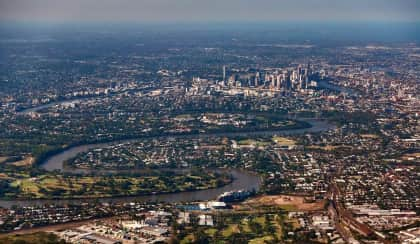Clayfield investments offer old-world charm and Olympic glory
Heritage hunters will land on good value in Brisbane’s historic suburb of Clayfield.

Just seven kilometres from the Queensland capital city’s central business district, this inner-north suburb is rich with historic character, boasting well over 50 heritage-listed buildings, coupled with swift inner-city access.
Clayfield was recently named in the highly coveted Smart Property Investment’s Fast 50 ranking for 2024, which was released to the public earlier this month.
The report and ranking combine the insights of a 14-strong investment expert panel and recent housing performance drawn from open-source data and aim to give unparalleled insight into the 50 Australian suburbs that are best primed for future growth.
With a median house price of $1.8 million, Clayfield is a great location for those searching for premium property options. By comparison, the median value for a house in Greater Brisbane as of April 2023 was $781,881.
However, Clayfield also offers more affordable entry points for investors and represents a great choice for strong capital growth potential in a high-demand location. The suburb’s 12-month growth comes in at an impressive 20 per cent, while the average yearly growth evens out to a still-substantial 8.5 per cent.
Investors can expect a gross rental yield of approximately 2.2 per cent, with rent sitting at an average of $750 per week.
Nicola McDougall, chair of the Property Investment Professionals of Australia (PIPA), noted that Clayfield, in particular, offers a golden opportunity for those targeting the Brisbane market seeking to purchase units in long-established buildings.
“When it comes to established units, investors looking for more affordable dwellings could consider inner-city suburbs such as Coorparoo, Taringa, and Clayfield. These areas have long since gentrified but generally have a percentage of older established units with affordable buy-in prices,” she said.
“Of course, when considering units for investment, it’s vital to prioritise superior locations as well as seek out smaller complexes with upgrade potential and always be mindful of the potential for new unit oversupply over the short to medium term.”
Established is a good word to represent Clayfield, and while the area isn’t expected to undergo any rapid change in the years ahead, it’s certainly a sure bet as a sought-after location.
The area has, in fact, attracted a high level of interest for its residential opportunities since the city’s earliest European settlements.
That history can be seen all around the suburb in historic buildings and names that hint at its historic roots.
The name Clayfield, in fact, points to the reason why much of Brisbane’s north became home to European residential development.
Clayfield refers to the fine white-grey sedimentary clay mined in the area and used in local brickworks, which gave rise to the area being called “the clay fields”. This industry was a prime reason for the growth of housing in the inner north Brisbane for the city’s colonial residents, many of whom found employment in the burgeoning industry.
And while it’s no longer an industrial hotspot, it still caters to the city’s workers with some of the best access of any Brisbane locale.
Home to the transit hub Eagle Junction, it’s an attractive amenity for CBD commuters who will find themselves just five stops from central. The station also provides services to Brisbane Airport, Shorncliffe, Doomben and Caboolture alongside Brisbane CBD and connects to numerous bus routes that snake through the surrounding area.
Families, too, find a wealth of kid-friendly reasons to base themselves in Clayfield, with two primary schools, one secondary school, and a prep-to-12 college, all located in the suburb.
And ahead of Brisbane’s 2032 Olympics, inner-city locations like Clayfield are set to attract further interest as the city and larger south-east area benefit from a projected $8.1 billion economic boost, including $4.6 billion in tourism and $3.5 billion in social improvements.
To see which other Queensland suburbs made the list, click here.